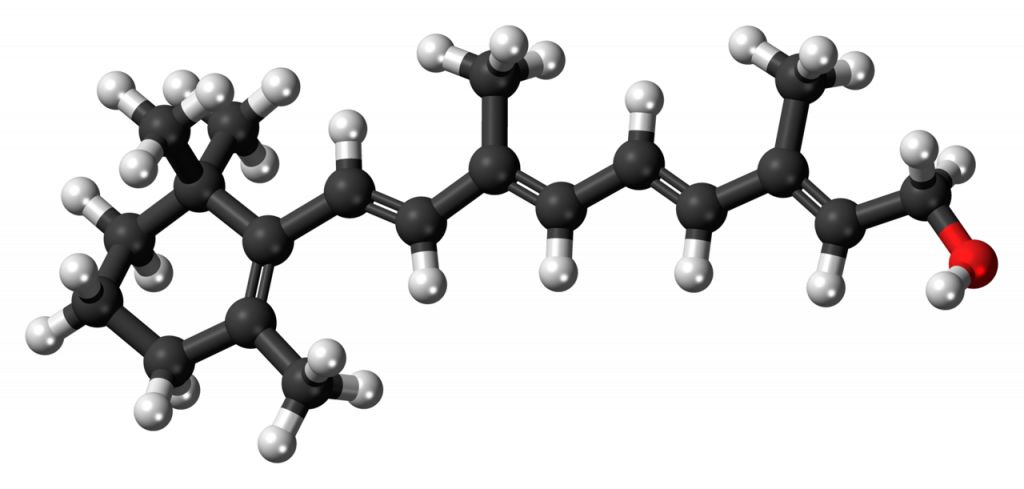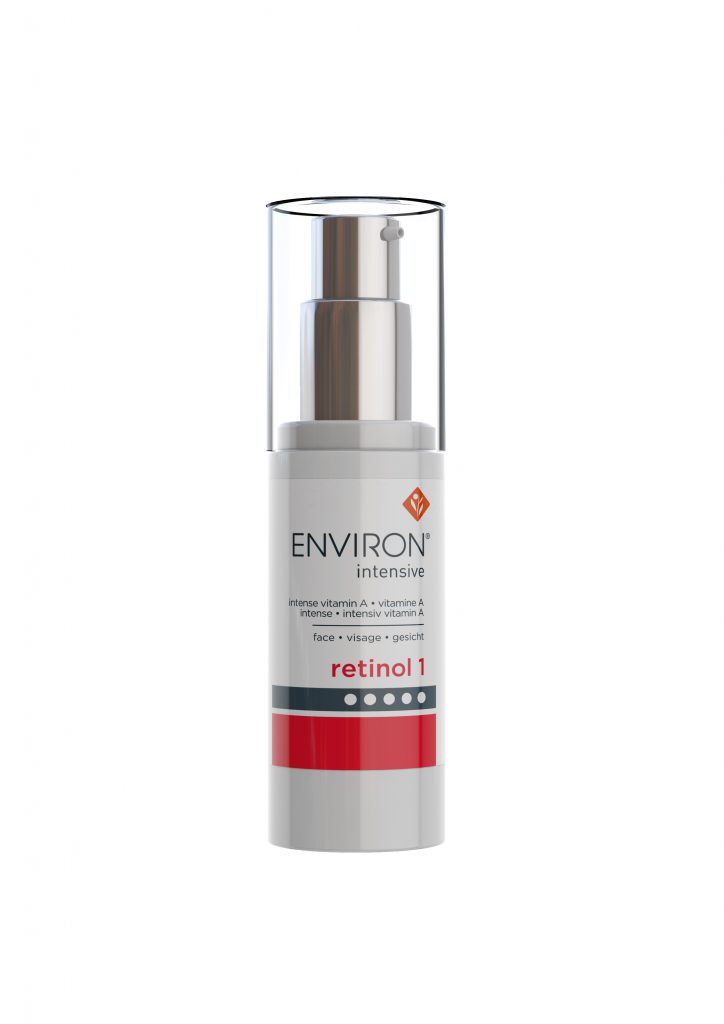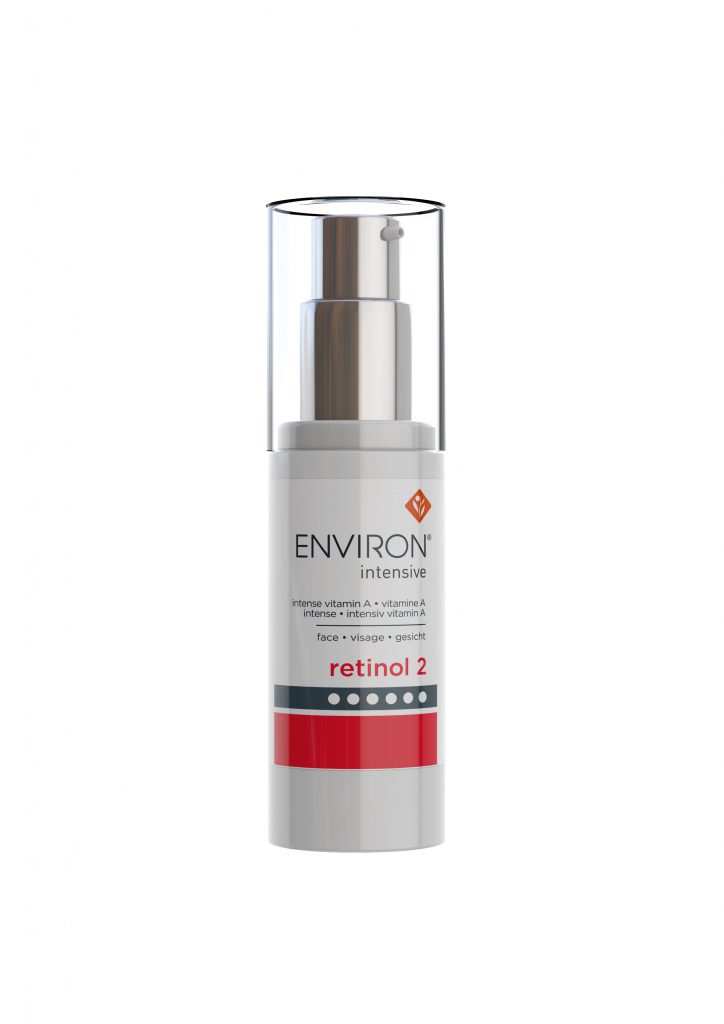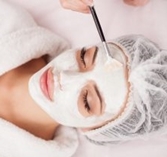
Do you have questions about Vitamin A? What about retinol? We have everything you need to know right here. Dr Des Fernandes, founder of Environ tells Professional Beauty about the ins and outs of retinol and how to treat your clients with this wonder ingredient safely.
What is retinol?
Retinol is the chemical name for vitamin A. It is the alcohol form of vitamin A which gets changed mainly to retinyl esters inside cells. A tiny percentage of topically applied retinol gets converted into the active version, retinoic acid – the acid version of vitamin A that works on the DNA.
Retinol largely exerts the effects of vitamin A on the skin depending on its concentration. That is why I use international units to measure the vitamin A and not the percentage. 1000 international units of retinol gives exactly the same result as 1000 international units of retinyl palmitate, or retinyl acetate or retinyl propionate.
Virtually every bit of retinol applied to skin is converted to retinyl palmitate in the cell and is then slowly metabolised in the cell to retinol again, then retinaldehyde and finally into retinoic acid – that is where vitamin A exerts its effects on the DNA.
What are the skin benefits of Vitamin A as an ingredient?
You cannot normalise skin without vitamin A – it’s built into our genes. We absolutely need it to make skin cells function normally as the ultra-important vitamin A-responsive genes respond to nothing else. Some people are born with irregularities in their vitamin metabolism (and I believe my sister and me have been born with some inefficiency of vitamin A metabolism), but I can tell you that eventually, as enough vitamin A receptors become active, the skin becomes healthier and healthier…. and gets to the normal levels of vitamin A found in young children.
What are the problems with retinol?
Retinol is unfortunately very unstable and has a shelf life of about 6 months only. It is also damaged by light (but not when bound to the protein) and one of the relatively more irritant versions of vitamin A (although not as irritant as retinoic acid). It is difficult to formulate easily into a cosmetic product and we cannot make retinol products stronger that 10,000 i.u. g % without causing excessive irritation. Retinol at high doses acts as a toxin for cell membranes, which explains why in nature it is only found in very tiny concentrations.
Vitamin A can cause reactions in the skin, how should therapists get around this issue?
Vitamin A causes a reaction (the retinoid reaction) only when the natural vitamin A receptors on cells are degraded (generally by sun exposure). We are all born with rich levels of retinoid receptors on our cells but sun exposure depletes them. That is why children under the age of about 4 years, do not get retinoid or vitamin reactions. Vitamin A, paradoxically, is the only way to build up more receptors.
How should therapists start clients with sensitive skin on retinol?
The only sure way to avoid the retinoid reaction in older people is to start at the lowest dose and gradually work up, as the skin restores vitamin A receptors. I believe that we should use graduated concentrations of vitamin A in a step-up system to avoid or minimise the retinoid reaction. In my own case, I was very sensitive to vitamin A but today I use about 100 times stronger concentrations of vitamin A than the products than used to cause a retinoid reaction in me when I started.

What is the difference between the retinoid reaction and sensitivity or allergy to retinoid?
With a sensitivity or allergy, the longer you use the vitamin A the worse it gets. With a retinoid reaction, the longer you continue to use vitamin A, the less the reaction. A retinoid reaction is a simple chemical irritant reaction because the vitamin A remains outside the cell, which causes the irritation. If the vitamin A is absorbed into the cell, then there is no reaction. The paradox of vitamin A is that the people who are most depleted, and in most need of restoring their vitamin levels, are also the people who will get a retinoid reaction. The step up program specifically addresses this problem.
You have the Step Up program, how does this work? And what is the process?
I have a 8 level step-up system, which I have worked out through trial and error the concentration of vitamin A that generally will not cause a reaction in skin and yet will start to stimulate the production of more vitamin receptors. That’s step 1. Then as we develop sufficient receptors on the outer membranes of skin cells, we can move to step 2 – in sensitive people that step might cause a slight retinoid reaction. We continue step 2 till the skin is comfortable and we can more to step 3. Each step we build up skin receptors and by level 6 we begin to approach the normal levels found in young children. The more receptors on the cell walls, the more vitamin A can be taken into the cell and then it is stored as retinyl palmitate largely, which is tightly controlled and only fractions get metabolised through retinol to retinoic acid.That is what gives us all the benefits of vitamin A.

Does high potency mean better results?
Broadly speaking yes, but if the levels are too high, relative to the cell receptors then we get no benefit but the chance for a retinoid reaction. To get significant lightening of pigmented marks, we need the highest levels of vitamin A. To get the most activation of collagen in a short time, we need high levels. However, long term use of low levels of vitamin A can eventually produce similar results to higher levels. Highest levels achieve the gold standard result.
If a therapist has a client walk in who has skin that has become sensitised from over-use of vitamin A, how should they go about getting skin back to health?
First of all one needs to understand that you cannot “overuse” vitamin A, by which I mean use it for too long a time. We are always running short of vitamin A in our skin because it is destroyed by light and in ideal circumstances we should use topical vitamin A as long as we want lovely healthy skin. Reactions occur from using the wrong dose relative to the skin receptors. The client should be informed that the reaction to the vitamin A comes from a relatively inadequacy of retinoid cellular receptors as compared to the concentration of the vitamin A in the cosmetic or medical product. These people may respond to changing the regime and asking them to use their product only every second or third day, or put them on an alternative lower dose vitamin A product. Stopping for even as long as a week and then gradually re-introducing the vitamin A may be necessary. Keep them on low dose for a protracted period so that they build up receptors and start feeling the moisturising benefits of vitamin A. In the worst cases this may take as long as 6 months but it is worthwhile doing this because vitamin A has no substitute.
Once sensitised skin is healthy and normalised again, can these clients then go back on vitamin A?
As I have explained above, you actually need to continuously supply vitamin A, albeit in intermittent doses in the beginning in order to restore normality. If you think you normalise skin by stopping vitamin A and supplying creams to “moisturise” skin to make it seem normal, then the skin will become even more deficient of vitamin A and when you go back onto vitamin A you will get a retinoid reaction. That’s why some people have the mistaken idea that they are too sensitive for vitamin A or are allergic to it. It’s a catch 22; you need the vitamin A that you react to, to make changes in your skin so that you don’t react to vitamin A!!
Can every skin type handle vitamin A? Every single person in the world is utterly dependent on vitamin A to maintain healthy skin. The paler your skin, or the more sun damaged it is, the more deficient the skin becomes in vitamin A. Vitamin A deficient skin is prone to acne, to pigmentation marks, to wrinkles, aging and worse still, to developing non-melanomatour skin cancers. Vitamin A rich skin is smoother, even coloured, radiant and does not develop skin cancers. You can increase the vitamin levels in your skin by taking vitamin A by mouth but then, according to research from the Arizona Cancer Research Institute; you should use about 40,000 international units of vitamin A every day.

What do you recommend to pregnant women?
Vitamin A is locked in the skin and cannot be absorbed into the blood stream, but because people don’t understand this and judges in particular, I recommend that women should stop using vitamin A during the first trimester so that they cannot erroneously blame topical vitamin A for causing a foetal abnormality. By the way pregnant people, according to various authorities are probably most likely to be vitamin A deficient because they are persuaded to avoid vitamin A. The conundrum is that Vitamin A is essential for developing a normal healthy baby.
What is the difference between an effective retinol product and an inferior one?
Most vitamin A products on the market that boast that they never cause a retinoid reaction are useless because they probably have insufficient levels of vitamin A. Because retinol is quite an irritant ingredient at effective doses, one could say if the skin feels comfortable with retinol then probably the dose is low. I personally think that people commencing vitamin A regimes should not use retinol itself but rather use the softer esters like retinyl palmitate or propionate or linoleate and then make sure their cosmetic house offers a step-up from weak to stronger dose
How can therapists get the most out of Vitamin A so that they are delivered effectively?
If you [are talking about] Retinol specifically, then I would say the therapist needs to be careful because they must always be aware of the possibility or a retinoid reaction. Use product that have the softer esters as described above, and then maybe to intensify the dose of vitamin A one can use retinol at a later stage. I generally use the retinol in a separate, added product to boost the levels of vitamin A to the highest levels.
To find out more about Environ, click here.
Related
- Meet Maxx – Salon profile on Melbourne’s House of Maxx
- The comeback of cannabis and it’s part in the beauty industry
- The power of cosmetics packaging
- The world’s most powerful beauty influencers
- You need to use video marketing – NOW

